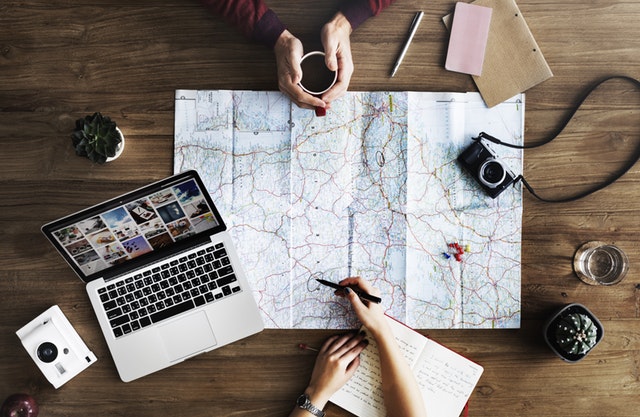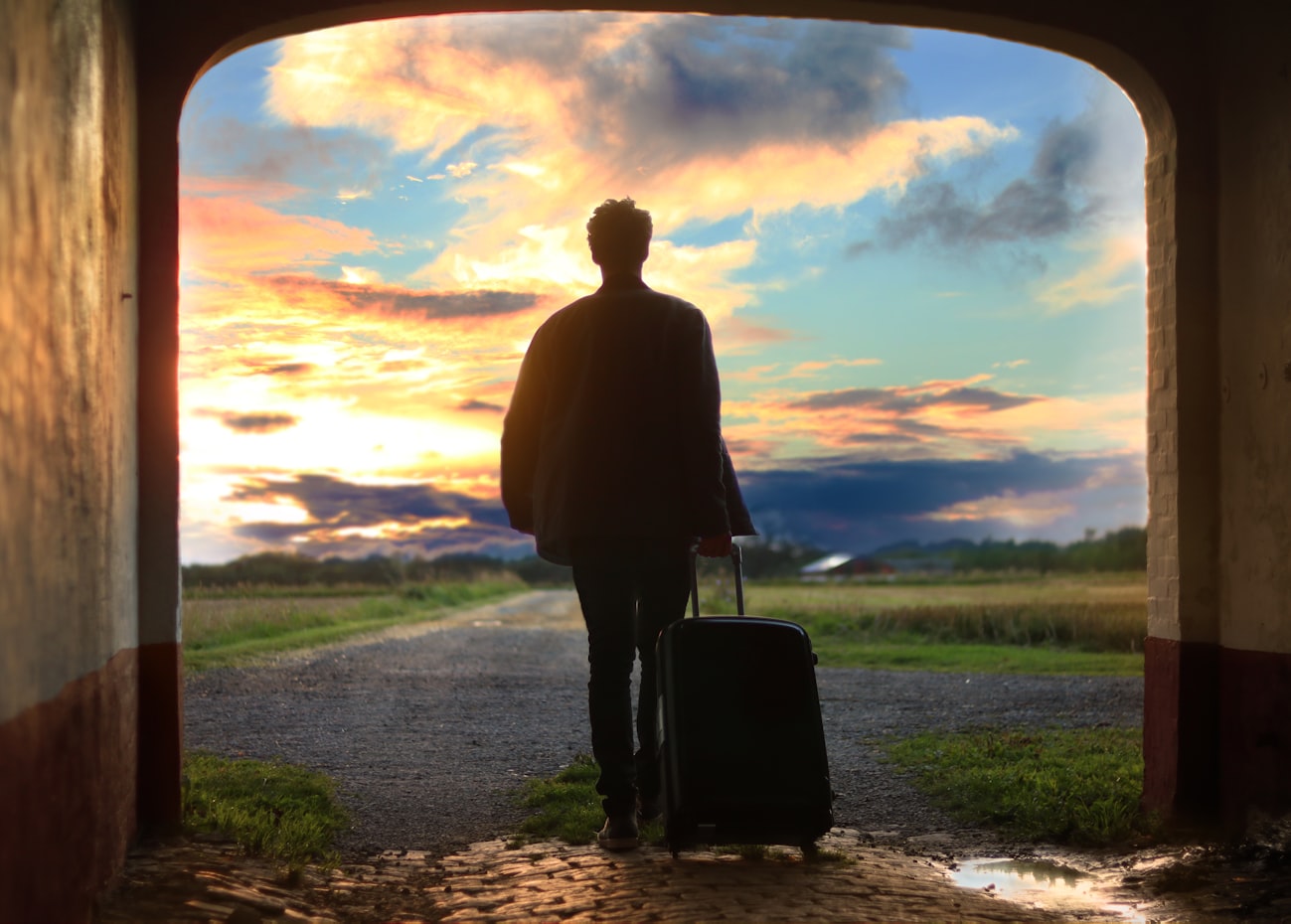It’s that time when we are all coming off the end-of-year holiday high, a cycle around the sun is in front of you and you are already wondering when is the next long weekend or when will the kids school be closed for spring break. You are wishing you had already planned for the big summer holiday, but let’s be honest, every time you think of going somewhere and start researching, the options available can be quite daunting.
Don’t worry, you are not alone. Travel planning for a trip anytime in the year requires a lot of work, and searching for travel information online can be quite overwhelming. Contradictory reviews and conflicting information don’t always help. While guidebooks are a great resource to help you, they can be expensive and sometimes outdated.
Why plan though and not let the wind carry you? Well yes, there is an element of surprise and a sense of discovery in just showing up. Still, chances are that you are on traveling on limited time and money, and a surprise might prove costly. Even backpacking across Europe requires some amount of planning, such as knowing where the cheap hostels are or how to survive on 20 Euros a day, etc.
So, where do you start? We have been traveling for more than a decade, and here is our guide to planning that (near perfect) trip.
1. Start With Your Travel Goals
That’s the first thing you have to address in the words WHY? Why are you making this trip and what are you trying to get out of it? Are you hoping for a weekend getaway after a crazy month at work? Or are you planning a three-week vacation when the school’s closed for the summer? Find your reason.
The answer to these will define where you will go and what you will do there. For instance, if you want to go to a famous place like Paris for bucket list sight-seeing, then your itinerary will include the Eiffel Tower & Louvre. If you are traveling out of town for a reunion with friends, then you may bump up your restaurant and bar game. And if you are traveling with kids and family, then no matter how local or your destination is, you may end up going to that local amusement park or zoo or spending time in the hotel pool
2. Know Your Travel Companions
Who you travel with can make or break the trip. It affects what you will end up doing, eating, and spending. When one travels alone, there is a lot of flexibility in planning. You can sleep in till noon or walk 12 miles in a day, and it’s all on you. When you travel as a couple, family or with friends, it’s nice to think about aligning everyone’s interests and inputs.
One of my big lessons of non-solo traveling has been to find common ground in your travel styles and keep the option of doing things apart. I love visiting antique markets, which my husband has no interest in. So when we travel, he sometimes just chills at the hotel or gets a drink at the bar where and I venture out for some window shopping.
Traveling with a kid can totally change the game. Before our son was born, we would have insane 12-hour itineraries that could include several miles of hiking, shopping, and hours of museum browsing. We still travel, but our plans are not as jam-packed anymore, and food and bathroom breaks are a priority. And we never attempt to stay more than a couple of hours in a museum (unless we have to, for instance, at Rijksmuseum in Amsterdam, we handed our then three-year-old son a tablet to watch so we could peacefully admire the Rembrandts and Vermeers).
And we have found the perfect travel companions with our friends tripinerary. Our styles and goals match, and we always align on the itinerary before our trips so we can include what everyone wants to do. And we always keep the flexibility to do our own thing, when at the destination.
 3. Pick Your Destination
3. Pick Your Destination
You probably already know where you want to go, but if you don’t, here are some pointers on picking a destination.
Weather, weather, weather – Too cold or too hot can be a mood killer, and if it’s rainy, then outdoor pursuits are out. So ask, is the weather favorable for your trip?
Consider Shoulder Travel Season – This is our favorite time because the weather is not entirely inhospitable, and everything is much cheaper and much less crowded. The weather can be tricky during the shoulder travel season, but in my experience, there are more good weather days than not.
Local Events/Festivals – If you are travelling to see a sporting event or music festival or to experience fall colors, then you have to go to a specific place. For example, Germany is the best place for Oktoberfest. However, everything will probably be super pricey as others will be making a beeline for these destinations too.
4. Let’s Talk About Money
Unless one is rolling in cash, one is bound to think about money when it comes to travel. The big bucks go towards flights and lodging, but local transportation and daily meals add up too. Here are some of the things that have helped us keep our travel costs down:
Look for flight deals– If you are planning an international trip, start thinking at least six to eight months ahead and put alerts on flight prices on sites like Kayak. If you book well in advance, you could end up paying half-prices for the usual airfares. Why pay $1500 for a round trip when you can get the same ticket at $700?The same goes for domestic flights where booking a few months in advance can get cheaper fares (also, look out for those flash deals). Also, travelling mid-week is less expensive than flying out on Friday night.
Airbnb and vacation rentals are often the more budget-friendly choice when visiting major cities, especially if you want to stay close to the city center. We’ve found this to be particularly true during our travels in Europe. They’re also a great option for groups since renting an entire apartment with a kitchenette is usually more affordable and convenient than booking multiple hotel rooms.
Save on breakfasts –Over the years of travel, we have realized that breakfast fare is relatively standardized, especially in the western hemisphere. Unless there is some specific local delicacy, one is most likely to be eating some variation of bread and eggs. Also, stepping out for breakfast when on a trip means you start your day will start late. If staying in a hotel, make sure your amenities include breakfast. If staying in Airbnb or a vacation home, buy easy to assemble breakfast items from a local store so that you are sorted. This also gives a good excuse to sample local groceries and produce.
5. Plan A Daily Itinerary
This approach may not be for everyone, but I highly recommend it—even if your plan is just to lounge by the pool. I like having control, so I prefer to plan each day with a clear structure: morning, afternoon, and evening activities.
No, I’m not crazy! This level of planning has been incredibly helpful, especially in destinations like Rome, Paris, Florence, London, New York, and Hong Kong—places packed with things to see and do, where prioritization is key.
That said, not everyone enjoys putting in this much effort before a vacation. If planning isn’t your thing, just ask ChatGPT to build an itinerary for you! That way, you have a guide to follow (or ignore) as you please. Plus, without pre-planning, you’ll likely miss out on high-demand attractions that require advance booking—looking at you, Italy!
I’ve had trips where I didn’t prepare an itinerary and ended up feeling lost and unmoored. Exploring new places is great, but what makes it even better is having context. I don’t believe planning takes away from the surprise or sense of discovery—after all, knowing something is very different from experiencing it.
These are my five golden pillars for planning a trip as close to perfection as possible. Of course, things will go wrong—that’s inevitable. But those unexpected detours? They often become the best travel stories only because everything else worked.



 3. Pick Your Destination
3. Pick Your Destination
